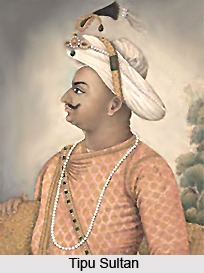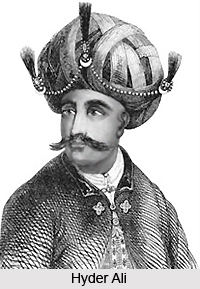 History of Thrissur District has been a major determining feature in the politics of south India. The word Thrissur is actually an anglicized and abbreviated form of the Malayalam word `Thrissivaperur`, which literally means the town of the Sacred Shiva. A place of great antiquity, Thrissur was also known as `Vrishabhadripuram` and `Ten Kailasam; in ancient days. Since the ancient times, Thrissur district has played a sifnificant part in the political history of South India. The District can claim to have played a significant part in fostering the trade relations between Kerala and the outside world in the ancient and medieval period. It can also claim to have played an important part in fostering cultural relations and in laying the foundation of a cosmopolitan and culture in this part of the country.
History of Thrissur District has been a major determining feature in the politics of south India. The word Thrissur is actually an anglicized and abbreviated form of the Malayalam word `Thrissivaperur`, which literally means the town of the Sacred Shiva. A place of great antiquity, Thrissur was also known as `Vrishabhadripuram` and `Ten Kailasam; in ancient days. Since the ancient times, Thrissur district has played a sifnificant part in the political history of South India. The District can claim to have played a significant part in fostering the trade relations between Kerala and the outside world in the ancient and medieval period. It can also claim to have played an important part in fostering cultural relations and in laying the foundation of a cosmopolitan and culture in this part of the country.
The early political history of the district is closely linked with the Cheras of the Sangam age. They had their capital at Vanchi, and administered over large portions of Kerala. The whole of the present Thrissur District was included in the early Chera Empire. From the 9th to the 12th centuries, the history of Thrissur district is the story of the conquests and acheivments of the Kulasekharas of Mahodayapuram. 12th century onwards, it is the history of the rise and growth of Perumpadappu Swarupam. In the course of its long and chequered history, the Perumpadappu Swarupam had its capital at different places. It has been seen from literary works of the period that the Perumpadappu Swarupam had its headquarters at Mahodayapuram and that a number of Naduvazhies in Southern and Central Kerala recognized the supremacy of the Perumpadappu Moopil. The Perumpadappu Moopil is even referred to as the `Kerala Chakravarthi` in the `Sivavilasam` and some other works. One of the landmarks in the history of the Perumpadapu Swarupam is the foundation of a new era called `Pudu Vaipu Era`. The Pudu Vaipu Era is traditionally believed to have commenced from the date of which the Vypeen Island was thrown from the sea.
 A period of aggressive warfare followed in the 14th and 15th centuries. During this time, the Zamorins of Calicut acquired a large part of the present Thrissur District. In the subsequent centuries the Portuguese dominated the scene. By the beginning of the 17th century the Portuguese power in Kerala was on the verge of collapse. About this time other European powers like the Dutch and the English appeared on the scene and challenged the Portuguese. Internal dissension in the Perumpadappu Swarupam helped the Dutch in getting a foothold on the Kerala Coast. As the Kerala Chiefs were conscious of the impending doom of the Portuguese, they looked upon the Dutch as the rising power and extended a hearty welcome to them. The lack of unity and solidarity among the people at this time led to a lot of aggression. Hyder Ali and Tipu Sultan figured very prominently during the period.
A period of aggressive warfare followed in the 14th and 15th centuries. During this time, the Zamorins of Calicut acquired a large part of the present Thrissur District. In the subsequent centuries the Portuguese dominated the scene. By the beginning of the 17th century the Portuguese power in Kerala was on the verge of collapse. About this time other European powers like the Dutch and the English appeared on the scene and challenged the Portuguese. Internal dissension in the Perumpadappu Swarupam helped the Dutch in getting a foothold on the Kerala Coast. As the Kerala Chiefs were conscious of the impending doom of the Portuguese, they looked upon the Dutch as the rising power and extended a hearty welcome to them. The lack of unity and solidarity among the people at this time led to a lot of aggression. Hyder Ali and Tipu Sultan figured very prominently during the period.
In 1790 Raja Rama Varma (1790-1805) popularly known as Saktan Tampuran ascended the throne of Cochin. With the accession of this ruler the English or modern period in the history of Cochin and of the District began. Saktan Tampuran was mainly responsible for the destruction of the power of the feudal chieftains and increase of royal power. the anti-feudal measures of Saktan Tampuran coupled with the several administrative reforms introduced by him marked the end of the medieval period in the history of Cochin and ushered in the modern epoch of progress.
The wave of nationalism and political consciousness which swept through the country since the early decades of this century has its repercussions in the District as well. Even as early as 1919 a Committee of the Indian National Congress was functioning in Thrissur. In the Civil Disobedience Movement of 1921, several persons in Thrissur town and other places in the district took active part and courted arrest. Thrissur District can claim the honour of having been in the forefront of the country-wide movement for temple entry and abolition of untouchability. The famous Guruvayur Satyagraha is a memorable episode in the history of the national movement.



















